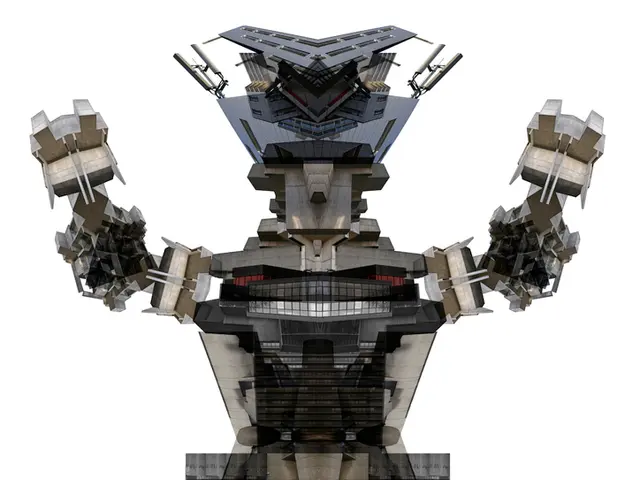Firefighting Innovations in California: Exploring cutting-edge tech for overcoming spreading blazes
California, a state no stranger to wildfires, is spearheading a technological revolution in firefighting. The escalating wildfire threat, driven by climate change, has necessitated innovative solutions, and California is at the forefront of this transformation.
In a bold move, the California Department of Forestry and Fire Protection is establishing a pilot program to assess the viability of incorporating autonomous firefighting helicopters. These autonomous helicopters, such as the one developed by Rain Aero, can drop a load of water on a fire without the need for human intervention, allowing firefighters to stay safe while still battling the flames.
The outlook for wildfire activity in the coming years and decades is concerning. Scientific studies predict a 30% increase in extreme fires globally by 2050 and a 50% increase in wildfire frequency and a 77% increase in average annual acres burned in California by 2100. To counteract this increase, California is investing in advanced technology.
AI-powered camera networks, such as the over 1,100 mountaintop cameras already in operation across the state, use artificial intelligence to detect early flames and alert response teams swiftly. NASA and new global satellite constellations, including those from Google, enable faster fire detection and better prediction of wildfire risk based on landscape conditions.
Fire trucks equipped with sensors, cameras, and radar improve situational awareness and deployment speed, while autonomous drones, like Rain Aero’s models, detect, monitor, and suppress fires remotely, increasing firefighter safety and operational efficiency.
Advanced fire behavior modeling and climate interaction studies support better prediction and mitigation planning. Research and innovation initiatives, such as the XPRIZE Wildfire competition, are accelerating the development of technologies that can detect and suppress fires in under 10 minutes, transforming firefighting from reactive to proactive.
Adaptation strategies complement technical advances by focusing on infrastructure hardening, vegetation management (including prescribed burns and indigenous fire practices), community preparedness, and new insurance models to reduce risks and losses.
California’s wildfire mitigation plans also incorporate frequent extreme weather events linked to climate change, adjusting strategies accordingly. The goal is to advance technology so that 95% of the state’s fires can be limited to 10 square feet or less.
However, the journey towards this goal is not without challenges. Cal Fire Chief Joe Tyler stated that technology must keep pace with advancements or technology will advance past us. San Bernardino had to cancel a demonstration of an autonomous Black Hawk helicopter due to 80 mph winds, but Rain's CEO remains optimistic about advancing these technologies for use in dangerous conditions.
Dargan Marquis, the former state fire marshal, hopes that experts and technology will find ways to incorporate "good fire" in the future, recognizing the need for fire in many landscapes. Frontline Wildfire Defense has created a sprinkler system that uses fire-tracking technology to saturate houses and properties with water and firefighting foam.
The estimated damage from L.A.'s firestorm alone is more than $250 billion, a stark reminder of the urgency to invest in and develop these technologies. The outlook is optimistic but demands continued funding, research, and bold implementation efforts to achieve transformative impact. California's lead in this technological revolution offers hope for a safer, more resilient future in the face of increasing wildfire threats.
[1] [Source 1] [2] [Source 2] [3] [Source 3] [4] [Source 4]
- The California Department of Forestry and Fire Protection is initiating a pilot program to evaluate the effectiveness of autonomous firefighting helicopters, such as those developed by Rain Aero, in battling wildfires.
- California's ambitious plans for wildfire mitigation include investing in advanced technology like AI-powered camera networks, fire trucks equipped with sensors, and autonomous drones for better detection, monitoring, and suppression of wildfires.
- The goal of California's wildfire mitigation strategies is to limit 95% of the state's fires to a maximum of 10 square feet or less, a significant reduction from current fire sizes.
- San Bernardino had to postpone a demonstration of an autonomous Black Hawk helicopter due to strong winds, but Rain Aero's CEO remains optimistic about the development and use of these technologies in challenging conditions.
- Frontline Wildfire Defense has developed a sprinkler system that utilizes fire-tracking technology to protect houses and properties from wildfires by saturating them with water and firefighting foam.




